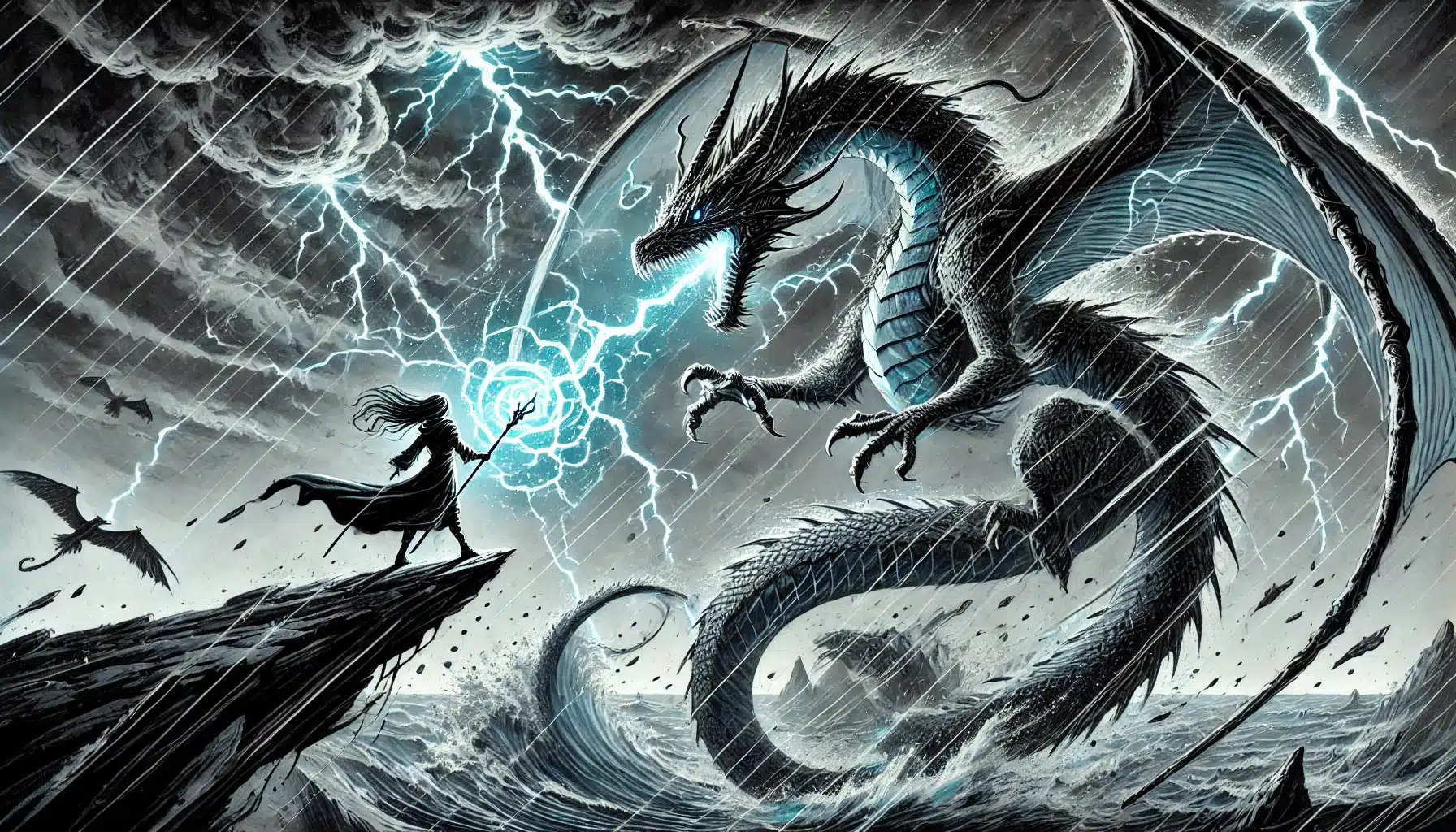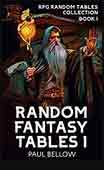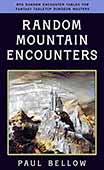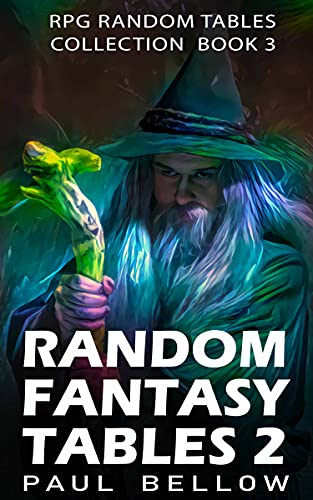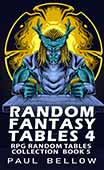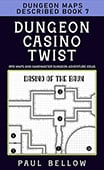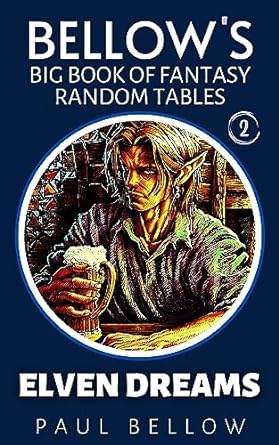The moment a dragon’s shadow stretches across the battlefield, Dungeons & Dragons enters a different register. Veterans know this by heart—those thunderous wingbeats, the searing breath, the looming presence that makes even brash heroes pause. Yet, there’s a double edge to their ubiquity: for all their grandeur, dragons are sometimes too familiar for seasoned players. They expect the color: red for fire, blue for lightning, silver for the judicious, brass for the whimsical, and so on. Encounter structure, breath weapons, legendary actions—all fall into well-worn patterns. Some groups even develop an almost blasé confidence, swapping anecdotes about outsmarting green dragons or deboning white ones.
That familiarity can breed predictability, sapping some of the awe these apex monsters deserve. Too often, experienced players can “meta” a dragon in moments: they know its resistances, its lair tricks, even its likely motivations. And so dragons become, paradoxically, just another obstacle. But what if we broke the mold? What if dragons felt as raw, wondrous, and menacing as legends promised?
The answer lies in reimagining dragons—twisting their forms, their origins, and their powers into the unexpected. Variant dragons not only reawaken the primal fear and respect that made these creatures a fantasy cornerstone; they also infuse campaigns with narrative heft. By playing with genre, lore, and mechanics, Dungeon Masters can craft dragons that are more than boss monsters; they become transcendent forces, shapers of fate, and profound mysteries.
Each dragon variant in this guide offers a different lens on draconic might. Some stem from elemental chaos, their bodies warped by the raw stuff of creation. Others stalk the boundaries of mind, myth, or civilization, posing threats no sword can solve. Each is designed not just to challenge combat tactics, but to catalyze story and immersion.
Use these dragons as climactic encounters, recurring nemeses, or enigmatic patrons. Let them leave scars—on the map, in the collective memory of your campaign, and deep in the hearts of your players. After all, when dragons shatter expectations, they become unforgettable.
- Elemental Infused Dragons
- Dragons of Thought and Dream
- Undead and Decaying Dragons
- Dragons Tied to Civilization
- Time and Space-Bending Dragons
- Dragons of Emotion and Philosophy
- Forgotten and Mythic Prototypes
- Hybrid and Fused Dragons
- Campaign Integration and Dragon Roleplay
- Final Thoughts: The Power of Reinventing Dragons
Elemental Infused Dragons
Dragons breathe destruction, but what if their breath was just the beginning? Elemental infused dragons are born or reshaped by deep, primal energies: molten fire, the deafening roar of cyclones, the midnight crunch of the oceanic trench. Unlike traditional dragons, these beings embody element itself—they are living catastrophes, sculptors of the landscape as much as apex predators.
Try my AI Tabletop RPG generators...and an extensive library of content!
Picture a cave where the walls sweat magma and the floor burns, or a storm dragon whose wrath turns sky into battlefield. These dragons are the children of primordial titans, survivors of ancient planar wars, and mutants spawned by holes in the fabric of reality. Some owe their nature to fissures between planes—realms of fire spilling into the mountains, the elemental deep seeping into subterranean lairs. Others may have been altered by exposure to the wildest magic, forever marked by cosmic event or weapon.
What sets these dragons apart goes well beyond a new flavor of breath. Their mere presence warps terrain and weather. Rivers run backward, earth solidifies to glass, storms churn in their wake. They may wield the spells of genies or primeval elementals, shaping battlefields with tidal waves, quicksand, or poison mists. Adventurers fighting such a dragon cannot simply resist the breath—every environment shift is a new hazard.
For Dungeon Masters, elemental infused dragons are invitations to reimagine what a “dragon encounter” looks like: battlefields that shift underfoot, lairs that rage with storm and fire, and adversaries that are the vanguard of a broader cataclysm.
Elemental Dragons—Sample Variants
- Magma-Blooded Firestorm Wyrm: Bleeds lava, spawns volcanic eruptions, and turns terrain into rivers of molten stone.
- Air Drake of Ceaseless Tempest: Summons permanent, shifting stormfronts with lightning, tornadoes, and deafening winds.
- Saltwater Leviadrake: Controls tides, summons corrosive storm surges, and decays metal with briny breath.
- Frost-Heart Glacier Sovereign: Blackens heat, creates sudden blizzards, and extrudes glacial spikes from the ground.
- Quakejaw Earthwyrm: Triggers earthquakes, rips chasms, and smashes buildings with tectonic fury.
- Vapormist Cloud Serpent: Dissolves into fog, blinds and chokes enemies, and manipulates humidity and condensation.
- Ashen Ember Drake: Smothers light, spreads wildfire, and breathes plumes of caustic ash.
- Lightning Pulse Thunderwyrm: Fuses thunderous roars with searing lightning arcs, controlling magnetism and sound.
- Shalehide Crystal Dragon: Grows gemstone spires, reflects beams of sunlight, and launches razor-sharp mineral shards.
- Poison Mire Wyvern: Turns ground to toxic bog, releases corrosive mists, and spreads mutant, venomous flora.
- Geyserblood Steamling: Hurls scalding jets of steam that burn and blind, and uses explosive geysers to displace foes.
- Aether Drake: Channels raw magical energy, distorts spell effects, and manifests reality-bending auroras.
- Obsidian Sandstorm Scourge: Swirls with abrasive sandstorms, slicing flesh and eroding armor.
With just a tweak, most existing dragon stat blocks can be reskinned with these elemental templates. Replace or reinterpret breath weapons, add regional effects (such as persistent storms or lava flows), and adjust lair actions to emphasize the dragon’s elemental nature. Listen to the land: strange weather, mutated wildlife, and tales of warped landscapes all hint at these dragons’ presence long before scales glint in the darkness.
⚔️ Fantasy RPG Random Tables Books
Make life as a Gamemaster easier…
If you play Dungeons & Dragons, Pathfinder, or other fantasy RPGs, this
RPG random tables series
is packed with encounters, NPCs, treasure, and more. Available in eBook or print—either way, you’ll have a wealth of adventure ideas at your fingertips.
Not only does this herald an impending threat, it deepens immersion—players will catch rumors of burnt villages, collapsed mountains, or unending storms well ahead of a climactic encounter. The dragon becomes part of the setting’s mythology, and every time it takes flight, the world itself seems to tremble.
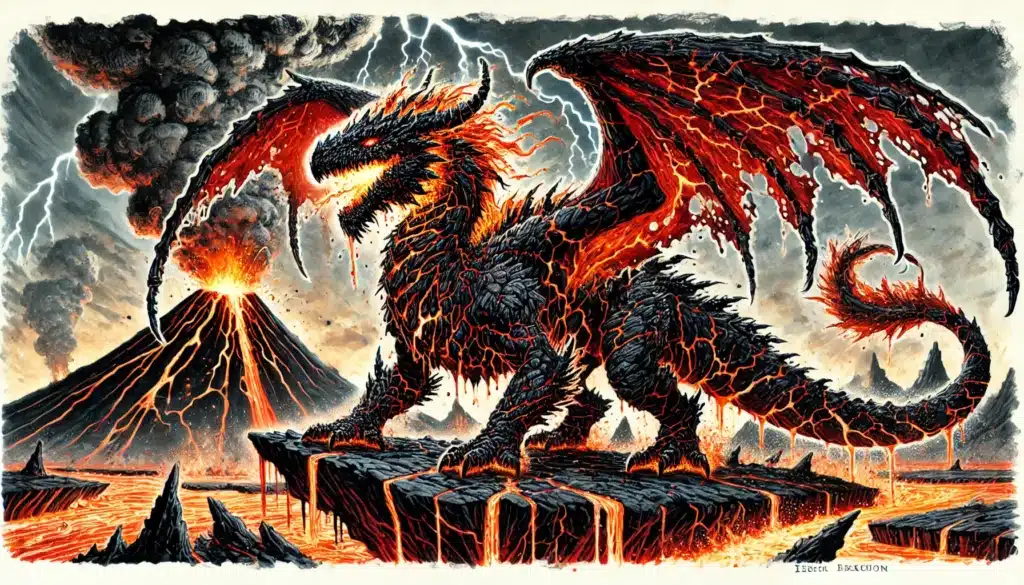
Dragons of Thought and Dream
Forget talons and teeth—some dragons shred the mind, not the flesh. Dragons of thought, dream, and illusion are elusive adversaries, operating in realms of perception and memory. When they strike, the world around your party ceases to obey mundane logic. Walls melt. The sun blinks out. Friends suddenly seem like strangers.
These dragons are masters of the intangible. Some have woven layers of psychic defense so dense they might as well be force fields. Others thrive inside dreams, crafting labyrinths of fear or joy in which intruders become hopelessly lost. Their sustenance may be memories—or the strength of their foes’ ambitions, sapping willpower while distorting reality. The most dangerous turn hope into confusion, or rewrite a hero’s greatest victories into shameful failures.
Origins for these dragons might include exposure to the Far Realm, ancient pacts with dream gods, or the rare crossing of their eggs through the boundary between worlds of thought and flesh. Paladins and wizards may whisper of these dragons as “the Mind’s True Test”—defeating one requires inner strength every bit as much as martial might.
What truly makes them terrifying is their uncanny ability to shape encounters around psychological tension. The party is rarely sure what’s real—or even what side they’re on—until hard-won clarity pierces the veil.
Dragons of Thought and Dream—Sample Variants
- Nightmare Dragon: Imprisons intruders in endless dream loops, each more disturbing than the last.
- Hallucinator Mind-Drake: Communicates only through hallucinations the party must decode to parley or fight back.
- Memory-Leech Synapse Wyrm: Feeds off past memories, causing amnesia or altered recollections.
- Ambition Parasite Dragon: Transforms a character’s deepest desire into a twisted, consuming curse.
- Fearweaver Phantasmal Serpent: Projects individualized nightmares, paralyzing foes with their own phobias.
- Illusionist Mirage Drake: Creates realistic duplicates, false terrain, and phantom threats.
- Identity-Eater Echo: Secretly exchanges party members’ personalities or traits, fostering paranoia.
- Dreamscape Walker: Draws adventurers into shared dream worlds, which may alter reality if survived or failed.
- Alignment Bender: Gradually and subtly shifts a PC’s alignment or outlook over time, sowing conflict.
- Synesthetic Enchanter: Warps perceptions—sight becomes sound, feelings turn tangible—driving enemies to madness.
- Trance Tyrant: Forces all creatures to relive traumatic events, stunning or incapacitating them.
Running a psychological dragon requires a toolbox of surreal encounter design. Keep combat rare; instead, emphasize investigation, conversation, and roleplay. Every interaction with these dragons can unravel the party’s trust in the world—or in themselves. Encourage players to explore mysteries: What’s real? Who are you really fighting? What price will you pay for clarity, or to unbind the waking world from the dragon’s clutch?
These dragons also lend themselves to slow-burn arcs, where the party only suspects a malignant dream creature at the heart of strange events. Build tension—strange deja vu, shifting personality traits, or missing nights of memory can all foreshadow the coming mind storm. When the final confrontation arrives, let it be as much a revelation as a battle.
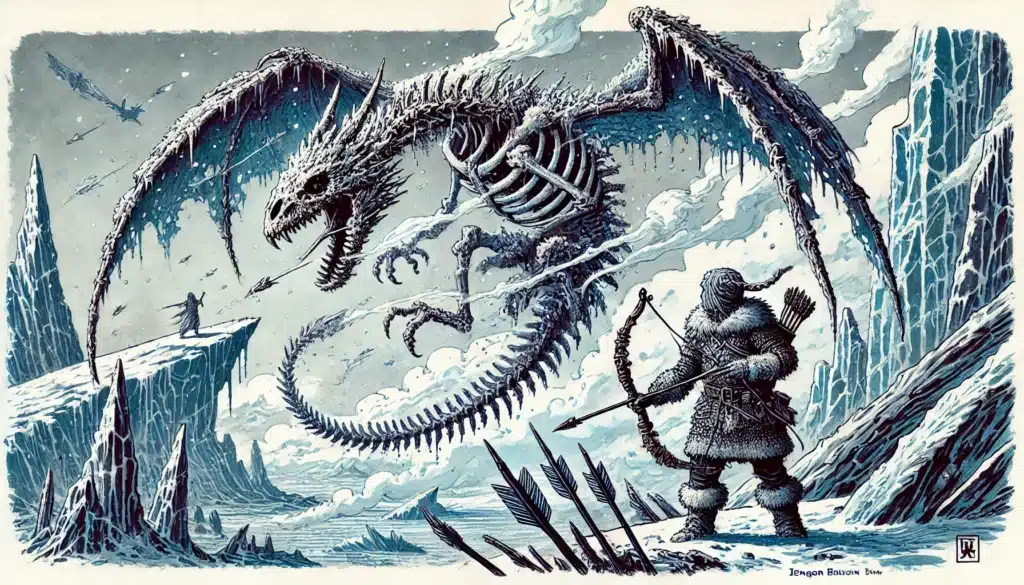
Undead and Decaying Dragons
Dragons are birth and death, creation and destruction—and nowhere is the latter more poignant than with undead or decay-themed dragons. Beyond the classical dracolich, these are dragons entwined with blight, rot, or necromantic ruin: creatures embodying the death not only of bodies, but of entire worlds.
Their presence signals doom for civilization and nature alike. Forests shed their leaves in terror; herds turn skeletal overnight; rivers run black. Some spread disease so virulent that even victory is pyrrhic—the taint lingers, reshaping land and legend for generations. These are dragons that do not simply defeat heroes but unmake realms, one plague, one spectral wildfire at a time.
Origins might include corrupted draconic hearts, failed rituals to achieve lichdom, or fusions of dragon and undead horde. Others arise wherever death’s magic stagnates, or as natural dragons pressed into service by necromancers who could not dream so boldly for themselves. The essence is entropy—wherever these dragons tread, things fall apart.
In combat, these dragons twist the very environment. Rotting carcasses rise, spectral flames dance, corrosive fog settles. Their powers corrupt as much as they kill, ensuring that every encounter exacts a lasting toll.
⚔️ Fantasy RPG Random Tables Books
Make life as a Gamemaster easier…
If you play Dungeons & Dragons, Pathfinder, or other fantasy RPGs, this
RPG random tables series
is packed with encounters, NPCs, treasure, and more. Available in eBook or print—either way, you’ll have a wealth of adventure ideas at your fingertips.
Undead/Decaying Dragons—Sample Variants
- Bonehoarder Corpse Dragon: Grafts undead minions onto its body, releasing them mid-battle.
- Ghostflame Ash Dragon: Is made of luminous, haunted ash and spreads spectral wildfire.
- Plague Wyrm: Breathes clouds of arcane rot, spreading magical contagion in its wake.
- Blightwing: Spreads swathes of death rot, mutates flora and fauna, and turns the ground pestilent.
- Corpsebinder: Animates dead foes as instant minions, growing larger with every soul consumed.
- Leechheart Dracolich: Drain life force directly; each successful kill restores its vigor.
- Ravenous Husk Drake: Devours anything organic, leaving only petrified husks.
- Carrion Maw: Breath is a gout of ravenous maggots and flies that swarm enemies.
- Sorrowmist Wraith Drake: Shrouded in necrotic fog; physical attacks pass harmlessly through.
- Pestilence Broodmother: Lays clutches of sentient plague eggs, each hatching a new horror.
- Moldspore Lichwyrm: Spores animate fungus zombies and even transform ground into slippery, dangerous mats.
- Rust-Scaled Grave Serpent: Corrodes metal and stone, rotting weapons and armor away.
- Crypt-Fused Obsidian Dragon: Infused with tombstones and burial treasures, it wields the spirits of the wronged.
- Doomscour Shadow: Fuses with shadows of the dead, snuffing out light, and thriving in total darkness.
Undead and decaying dragons are cornerstones for horror-themed campaigns or disaster arcs. Entire regions can fall beneath their corrosive gaze. A dying forest, a haunted barrow, or a city stricken by pestilence can each serve as organic settings for these dragons to emerge—each suggesting a deep, apocalyptic corruption.
Incorporate signs of creeping rot long before the party glimpses scales. Diseased animals, withered crops, or animated dead point toward a lurking force shaping the world’s decay. Solving such mysteries boosts tension and gives the true encounter—inevitable, terrible, and transformative—immense payoff.
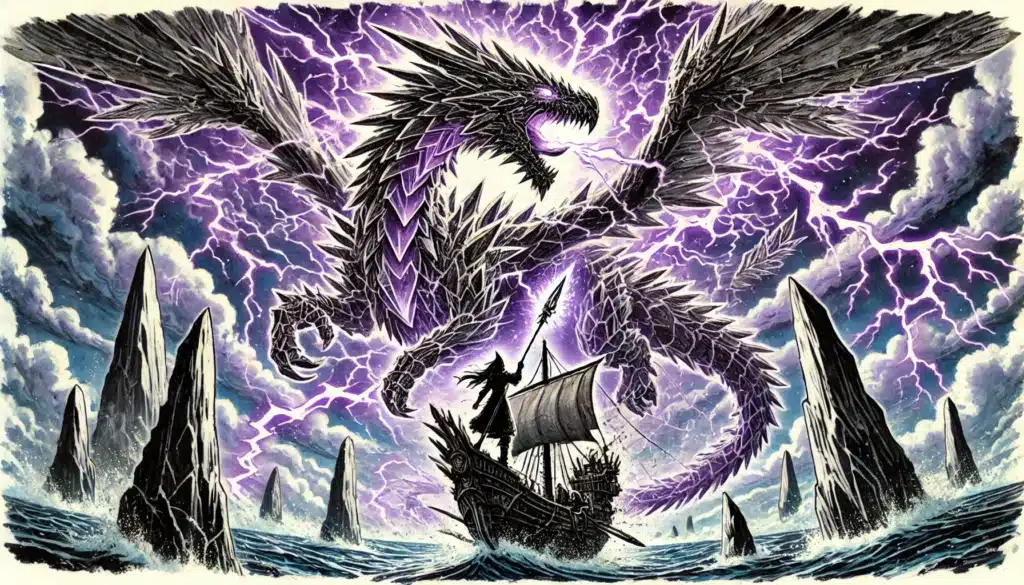
Dragons Tied to Civilization
While most imagine dragons as wild and elemental, some emerge from humanity’s greatest heights—and failures. Dragons of civilization absorb the nightmares and triumphs of society: technology, bureaucracy, faith, decadence. These are the dragons of the metropolis and megachurch, of clockwork, coin, and contracts.
Their lairs might be train stations, crumbling cathedrals, underground data vaults, or the penthouse suite in the heart of the city. They thrive on the energy, ambition, and chaos of mortal achievement. Some rise as civilization’s protectors, others as judges, and many as its greatest predators—invisible hands, unseen wheels, the influence that turns the tides of empires or stock markets.
Mechanically, these dragons wield the powers of progress or ideology. They may bend laws, shape urban geography, or turn technology into weapons. Their breath might be ink and contract, raw gold, or the sermons of zealotry. Defeating them rarely comes down to brute force; their greatest power is manipulation.
Dragons of Civilization—Sample Variants
- Bureaucracy Dragon: Dominates contracts, rules, and red tape; can bind characters with legal magic.
- Architect Wyrm: Twists the layout of cities, buildings, and dungeons, creating or closing passages at will.
- Gold-Schemer Urban Dragon: Disguises itself as a CEO or tycoon, manipulating markets and hoarding wealth.
- Factoryheart Smog Drake: Breathes poisonous industrial fumes; commands constructs and corrupts industry.
- Zealot Cathedral Serpent: Wields divine magic, turning faith itself into a weapon or shield.
- Rogue Algorithmic Drake: Infects information networks, causing confusion and miscommunication city-wide.
- Gossipscale Rumor Wyrm: Spreads falsehoods, inciting riots or panic throughout districts.
- Ironrail Train-Maw: Dwells in enchanted train lines, able to travel instantly along tracks and control transportation.
- Pactmaker Lawful Dragon: Binds mortals to magical oaths, enforcing deals with deadly consequences.
- Powergrid Storm Drake: Controls lightning and electricity; can black out or overload urban centers.
- Museum Hoardmaster: Preserves history and relics, animating them to defend its lair or attack intruders.
- Urban Nature Allegiant: Grows jungle-like city parks overnight, reclaiming ground from civilization.
- Inquisition Blight: Controls secret police, vanishing dissenters and enforcing dogma with draconic force.
Using dragons of civilization allows DMs to wield monsters as mirrors: What kind of world have your PCs made? What ideologies run rampant, and what terrors do they create? Social encounters, clever investigation, negotiating with unseen powers—these become battlegrounds every bit as valid as blood and steel.
When integrated thoughtfully, these dragons drive political intrigue or urban fantasy to new heights. Social maneuvering, clever contracts, and cascading deals abound. Even forging alliances or manipulating dragon-driven systems for good can be as satisfying as outright victory.
Time and Space-Bending Dragons
In the deep mythos of D&D, some dragons slither through the cracks between moments, or cast their shadows across multiple realities. Time and space-bending dragons are the architects, vandals, and victims of cosmic law—shaping entire campaigns with a flick of the tail (or a crunch of paradox).
A time dragon might age heroes with a glance or reduce a city to its foundations in one heartbeat. Spatial dragons literally fold dungeons or cities into labyrinths, shifting rooms with every move. Some open portals to alien worlds or split timelines so that party and dragon fight infinite echoes of themselves.
These dragons rarely just “breathe” time or space—they warp foundational rules. Mechanically, their abilities bend initiative, round structure, spatial continuity, and causality. Their presence turns straightforward duels into puzzles—and sometimes into existential crises.
Cosmic dragons may arise from forgotten gods, dead timelines, or singularities at the edge of reality itself. Some see themselves as gardeners of fate; others are cosmic accidents, both lost and unstuck from time.
Time & Space Dragons—Sample Variants
- Rewind Dragon: Resets entire rounds of combat, erasing and replaying recent events.
- Paradox Wyrm: Splits into multiple versions of itself from diverging timelines.
- Mirror-Drake: Creates distorted mirror-clones of party members, each with twisted motives.
- Locus Serpent: Teleports at will, shuffling enemies and terrain mid-battle.
- Chronophage Crystal Dragon: Drains lifespan, ages victims, and regenerates by stealing their future.
- Infinite Spiral Drake: Entwines lairs with Escher-like geometry—stairs loop, rooms rotate, gravity inverts.
- Gatekeeper Draconic: Opens and seals planar portals, summoning alien threats at random.
- Hourglass Nightscale: Can stop time for all but itself, acting with terrifying precision.
- Dreamtime Warden: Traps PCs in “time bubbles” where seconds inside are days or years outside.
- Fade-To-Nowhere Wyrm: Phases between reality and oblivion, striking from impossible angles.
- Relativity Breaker: Slow or hasten time around targets, breaking initiative and action economy.
Time and space-bending dragons ask more of DMs—prepping timelines, echoes, or altered maps—but reward players with truly unique set pieces. To avoid confusion, keep effects modular: use tokens, clocks, or colored lights to mark time shifts or spatial folds. Give players clear cues (“you have déjà vu,” “room fades to gray, only the dragon moves”) and encourage creative solutions.
The weirdness here isn’t a gimmick—it’s the essence. When players confront fate, memory, and the limits of space, every victory is epic. Every defeat echoes through time.
Dragons of Emotion and Philosophy
What if dragons were not just teeth, flame, and greed—but living avatars of sorrow, rage, justice, or hope? Dragons of emotion and philosophy test the soul, not just the sword arm. They serve as cosmic judges or dreamers, manifesting the collective fears, rages, and yearnings of mortals. Their hoards might be composed of memories, regrets, or the momentum of civil rights themselves.
Try my AI Tabletop RPG generators...and an extensive library of content!
These dragons are impossible to kill via steel alone. Sorrow dragons sap resolve, leaving adventurers listless and hollow. Justice wyrms suspend attackers in moral quandaries, demanding soul-searching before a blow can be struck. Rage dragons incite berserker frenzies, sometimes even against one’s own friends. Others are peace-bringers so potent they radiate calm or forgiveness as contagious as a spell.
Such beings may be children of forgotten gods or creations of universal archetypes—drawn into being wherever civilization’s tension frays or ideals burn bright. Their presence is transformative: Music turns mournful, colors dull, or passions run high.
Encounters with these dragons test the roleplaying mettle of any group. Sometimes, the only way to triumph is to face one’s own interior weaknesses—or redeem a fallen ideal.
Emotion/Philosophy Dragons—Sample Variants
- Sorrow Wyrm: Drains joy and courage, weakening PC resolve and skills.
- Rage Drake: Inspires uncontrollable anger, turning party members on each other.
- Justice Dragon: Judges and freezes targets until they satisfactorily solve moral dilemmas.
- Hope Bringer: Buffs, but also tests, the party’s optimism—with failure breeding despair.
- Envy Serpent: Sows discord, inflaming desire for others’ power or possessions.
- Wisdom Guardian: Offers guidance only to those who prove true insight, attacking the deluded.
- Despair Carapace: Inflicts overwhelming sadness, paralyzing those who have abandoned hope.
- Faithfire Wyrm: Embodies religious zeal, burning doubters and testing faith.
- Chaosheart: Enforces extreme unpredictability, changing rules/physics each round.
- Oblivion Whisperer: Encourages fatalism for all, its very presence undoing dreams.
To use these dragons well, build their approach slowly. Foreshadow sorrow dragons with melancholy songs, statues of weeping heroes, or waves of inexplicable despair. Use rumors, omens, or strange effects as emotional “weather.” Roleplay their dialogue and demeanor as larger-than-life—drawn not from ego, but from existential power.
When the confrontation arrives, design it as a moral crossroads, not just a fight. Sometimes victory means empathy, not death.
Forgotten and Mythic Prototypes
Most dragons trace their lineage to ancient ancestors—prototypes as old as the world, so alien and powerful that even the gods shudder to remember them. These mythic dragons rarely follow familiar draconic forms: some are flightless, others multi-headed or tongueless, and a rare few might never have breathed fire at all. Their essence predates the segregation of elements, societies, or even magic.
Such creatures slumber beneath mountains, coil through underground oceans, or drift continent-sized beneath the air. They are the subject of half-remembered myths, forbidden spells, or nightmares passed down through generations. Their influence is felt long before it is seen: earthquakes, strange auroras, or the birth of new lifeforms around their slumbering forms.
Mechanically, they might rewrite fundamental physical laws. They may “speak” through disasters, relics, or oracular signs rather than mortal language. Players rarely glimpse their full power at once; such dragons exist to be hinted at, never fully mapped or mastered.
These are campaign-defining forces—not just villains or allies, but mysteries to linger in the world’s background until the time is right.
Forgotten/Mythic Prototypes—Sample Variants
- World-Mother Serpent: Slumbers under entire mountain ranges, shaping earthquakes and volcanic eruptions.
- Chaos Hydra Dragon: Multi-headed; its back forms a vast labyrinth or living dungeon.
- Tongue-less Prophecy Drake: Speaks omens via weather, plant growth, or fate, not out loud.
- Dream-Seed Wyrm: Grows new forests, islands, or magical ley lines in its wake.
- Eclipse Serpent: Brings unnatural night, swallowing both sun and magic for miles.
- Riverbone Colossus: Ancient, petrified river spirit; its bones form an entire valley.
- Heart-Root Grandfather: Roots burrow for miles, altering flora and fauna above.
- Paradox Singularity Dragon: Exists in all possible states until observed; effects change with every encounter.
- Black Eclipse Leviathan: Devours light, heat, even magic for ages at a time.
- Meteor-Born Auroradrake: Arrives on falling stars, trailing spells that warp time or gravity.
- Rift-Walker: Opens rents in reality, allowing pre-elemental chaos to spill through.
- Ancestral Carver: Controls geomancy, carving canyons, mountains, and legendary landscapes.
When using these dragons, less is more. Let their legend unfold through dreams, sacred artifacts, or prophecies. Maybe the party finds petrified eggshells, earthquake scars spelling riddles, or whole villages worshiping “the mountain who will someday awaken.” Let them haunt the campaign’s periphery, only showing their full form in moments of ultimate crisis.
Let these dragons make the party feel humble—small pieces in a cosmic saga. When they finally appear, the world should seem to hold its breath.
⚔️ Fantasy RPG Random Tables Books
Make life as a Gamemaster easier…
If you play Dungeons & Dragons, Pathfinder, or other fantasy RPGs, this
RPG random tables series
is packed with encounters, NPCs, treasure, and more. Available in eBook or print—either way, you’ll have a wealth of adventure ideas at your fingertips.
Hybrid and Fused Dragons
Sometimes dragons are not pure, but hybrids—fused with other monsters, magic, or curses. These chimeric abominations exist because a mad wizard dared, a wild spell misfired, or a world-ending cataclysm blurred the boundaries of possibility. They are the ultimate unpredictable threats: physically overwhelming, but also equipped with quirky or horrific secondary powers.
Not all are accidents. Some races or civilizations breed hybrid dragons intentionally—to guard vaults, win wars, or simply see what forms emerge. Others can occur as side effects of exposure to corruptive magic, forbidden rituals, or experimental curses. One thing is certain: any time the party expects a “standard” dragon, hybrids will upend tactics and assumptions.
Mechanically, fused dragons mash up legendary actions, spell lists, immunities, and movement types. They may even switch between secondary monster “modes” as the battle progresses. Their lairs are just as mutated: magical dead zones, gravity-twisted rooms, or aberrant landscapes.
Each encounter is a riddle as much as a fight, rewarding adaptability and resourcefulness.
Hybrid/Fused Dragons—Sample Variants
- Beholder-Dragon Hybrid (“Eye Tyrant Wyrm”): Central draconic eye and breath weapon, with eye rays firing at random.
- Chimera-Drake: Three heads (lion, goat, dragon), each with a different breath weapon.
- Golem-Fused Dragon: Regenerates with scrap metal, wields construct immunities, and throws boulders.
- Spider-Drake: Spins webs, climbs walls, and injects paralytic venom with tail strikes.
- Vampire Dragon: Drains blood and disease, can turn into mist or bat swarms, dominates minds.
- Kraken-Dragon: Amphibious, enlarged tentacles, wields storms and crushing water pressure.
- Unicorn Drake: Heals with touch, casts spells of hope and purity, but defends with radiant fury.
- Gelatinous Ooze Wyrm: Absorbs weapons, splits into pseudopods, and corrodes gear.
- Mind Flayer-Dragon: Possesses psionic cone, brain devour tactics, and mind control.
- Treant-Drake: Controls plant life, hardens bark scales, regenerates with sunlight or rain.
- Chimera Basilisk Wyrm: Petrifying gaze and toxic breath, plus multi-headed attacks.
- Sphinx Dragon: Riddling, can banish or teleport with a roar; lair full of paradoxes.
- Harpy-Drake: Sonic scream, alluring song, and wing-rending claws.
- Werewolf-Dragon: Shapeshifts at will, infectious bite, and lunar-fueled rage.
- Elemental Djinn Drake: Three or more elemental resistances, casting spells of air, water, earth, and fire.
Hybrid dragons demand DMs think beyond “stock monster”—adjust CRs and abilities with care, considering both narrative and balance. Present clues about monstrous traits before the battle—e.g., webbed lair for a spider-drake, metallic echoes for a golem hybrid. Each hybrid encounter is a story, a secret, and a tactical puzzle rolled into one.
Get creative: your players will remember the first time a dragon’s head splits to reveal something utterly new, or a dragon flings zombies, lasers, or bizarre riddles at them.
Campaign Integration and Dragon Roleplay
No matter how outlandish or terrifying, dragons only truly shine when woven into the fabric of your campaign. Dropping them unexpectedly is a disservice; dragons earn awe by looming in legend, shadow, and rumor long before the party ever sees a scale or hears a roar. The best dragon encounters begin with mystery and end in catharsis.
First, invest in foreshadowing. Use dreams, omens, and strange phenomena—weather patterns, peculiar wildlife behaviors, tales from shaken survivors—to hint at a dragon’s presence. Side quests may revolve around disappearances, wild magic, or natural disasters localized in a single region. Allow clues to accumulate so the party comes to dread, then anticipate, then actively hunt their draconic adversary.
Second, build up the stakes. Let the dragon’s influence spill into the party’s world: corrupted forests, flooded towns, cursed relics, or wrenching nightmares. Rivals and allies may have lost or gained much at a dragon’s claws. Feel free to offer devastating consequences for ignoring such threats. When the party finally faces the dragon, let it be because the world itself left them no choice.
Third, when dragons appear, make them individuals. Give them history, mannerisms, rivalries, and goals. Style their speech, gestures, and even lair decor with unique flair—an ancient tragedy, a grand philosophy, a peculiar obsession. Encourage deep roleplay; negotiation or challenge can be every bit as memorable as battle.
Fourth, vary encounter environments and entry points. Sometimes the party meets a dragon not in its lair but disguised as an advisor, concealed in a festival crowd, or whispering from within a storm. Dragons may “ally” out of self-interest or test the party’s mettle in debate, not just combat.
Finally, never forget the endgame: whatever the outcome, every dragon encounter should challenge players’ assumptions about what is possible. Win, lose, or parley, they should emerge changed—scarred, strengthened, or forever haunted by mystery.
| Dragon Variant Type | Suggested Campaign Use | Recommended Foreshadowing Method | Ideal Encounter Environment |
|---|---|---|---|
| Elemental Infused | Regional disaster arcs | Weather disasters, mutated flora/fauna | Volcanic, stormy, or flooded lairs |
| Thought/Dream | Psychological thriller | Nightmares, memory erasure, odd behaviors | Illusory dreamscape or warped reality |
| Undead/Decaying | Horror, apocalypse, plague | Blighted land, undead animals, cursed relics | Ruined cities, graveyards, or swamp |
| Civilization Tied | Urban/political intrigue | Bureaucratic mishaps, rumors, urban oddities | City rooftops, courts, industrial wastelands |
| Time/Space-Bending | High magic, planar crisis | Deja vu, rewinding events, faint echoes | Shifting halls, fractal lairs, fading ruins |
| Emotion/Philosophy | Moral dilemma saga | Mood swings, philosophical debates, omens | Temples, crossroads, places of legend |
| Forgotten/Mythic | World-shaking endgames | Earthquakes, relics, epic poems, omens | Beneath mountains, drifting in the skies |
| Hybrid/Fused | Unique dungeons/war scenarios | Hybrid monsters, strange artifacts, rumors | Mutated lair, arcane laboratories |
| Wild/Twisted Nature | Environmental mystery arcs | Rapidly changing ecosystems, odd mutations | Jungles, corrupted wilds, deep forests |
| Divine/Planar | Epic-tier or cosmic events | Divine dreams, planar rifts, celestial portents | Sacred or planar locations |
Dragons should never just be a fight—they are a campaign’s gravitational center. Use them sparingly; too many dragons cheapen their mythic stakes. Every appearance, even as a voice or omen, should send ripples through the world. The greatest compliment to a DM: years later, your players still whisper of the time the dragon left them gaping, desperate, and changed.
Final Thoughts: The Power of Reinventing Dragons
Why do dragon encounters persist in the memories of tabletop players, even decades later? It’s not the hit points or the static damage dice—it’s the primal collision between myth and unpredictability. A truly great dragon encounter isn’t a stat block, but a story that demands courage, ingenuity, and awe—the sense that the party is facing something ancient, clever, and alive.
By breaking free from tradition—by infusing dragons with elemental chaos, bending time, or incarnating dreams and philosophy—Dungeon Masters can reignite that awe. Each variant or hybrid is a tool for evoking fear, mystery, or even profound beauty. The unfamiliar makes every spell, sword stroke, or plea from the heart feel consequential.
Challenging veteran players isn’t about raising numbers—it’s about destabilizing comfortable patterns. When no one knows what’s coming, everyone sits a little straighter. Even hardened groups rediscover the thrill of not knowing what awaits around the bend—a dragon’s shadow suddenly stands for everything they thought they’d mastered and everything they’d forgotten to be afraid of.
Remember: dragons are narrative engines. They can divide a continent, launch an age, or bear the party through a crisis of identity. Their power lies as much in their symbolism as in their claws and breath. Use them to mark turning points, to haunt your setting’s legends, to catalyze new heroes.
The next time your party hears a whisper of scales in the dark, let them wonder—let them worry. Because in your campaign, dragons are more than monsters— they’re primal, enigmatic forces of everything worth fearing, revering, and remembering.

